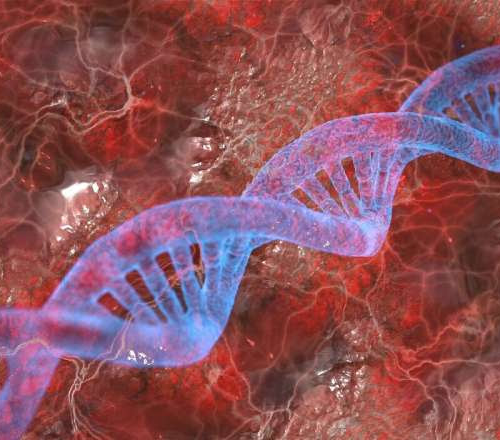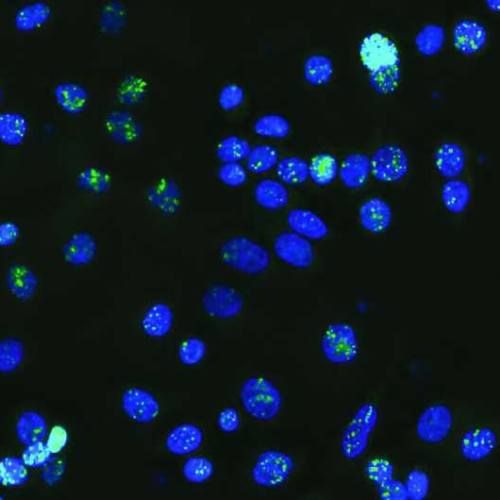Posted Today The nanorobots developed by Dr Minh Luu and Dr Shelley Wickham could be used to deploy targeted cancer drugs, make futuristic materials that respond to their environments and find uses in creating energy-efficient signal processing. A microscope – illustrative photo. Image credit: Pixabay (Free Pixabay license) Nanoscale ‘dinosaur’ Researchers at the University of Sydney Nano Institute have made...
Tag: <span>DNA</span>
DNA damage is key factor in age-related macular degeneration, study finds
by University of California, Irvine Ercc1 deficiency alters retinal structure and increases senescence markers in neural retina. Credit: Aging Cell (2024). DOI: 10.1111/acel.14419 A research team co-led by the University of California, Irvine has discovered that accumulated DNA damage in the retina is a key contributor to age-related macular degeneration and that targeting specific retinal cell types may...
How stray DNA trips an immune alarm
A conversation with Andrea Ablasser, laureate of the 2024 Liliane Bettencourt Prize for Life Sciences. Produced by The cGAS–STING pathway senses and regulates the cellular response towards microbial and host-derived DNAs.Credit: byakkaya/ Getty Images Andrea Ablasser, an immunologist and laboratory head at the Swiss Federal Institute of Technology Lausanne in Switzerland, leads a team that...
Scientists discover ‘toolkit’ to fix DNA breaks associated with aging, cancer and motor neuron disease
by University of Sheffield TEX264 acts at replication forks. Credit: Nature Communications (2020). DOI: 10.1038/s41467-020-15000-w A new “toolkit” to repair damaged DNA that can lead to aging, cancer and motor neuron disease (MND) has been discovered by scientists at the Universities of Sheffield and Oxford. Published in Nature Communications, the research shows that a protein called TEX264, together with other...
DNA sequencing reveals significant decrease in gut bacterial diversity during aging
by Agency for Science, Technology and Research (A*STAR), Singapore Aging-associated shifts in gut microbiome richness and relative abundance of key species. Credit: Nature Communications (2024). DOI: 10.1038/s41467-024-52097-9 A new study has revealed that gut bacteria may play a key role in aging, and that specific microbes could be targeted to promote healthy aging. ADVERTISING The Nature Communications study was conducted...
New CRISPR system for gene silencing doesn’t rely on cutting DNA
by Vilnius University The final model of the type IV-A mechanism. From left to right: Step 1 shows the formation of the “effector” complex, consisting of guide RNA and type IV-A proteins (rendered from a cryo-EM structure). The RNA-protein complex binds to a short motif next to the DNA target site (PAM). In Step 2, an...
DNA packaging directly affects how fast DNA is copied in cells, scientists discover
by Hubrecht Institute Credit: Pixabay/CC0 Public Domain Researchers from the Mattiroli group have found that the way DNA is packaged in cells can directly impact how fast DNA itself is copied during cell division. They discovered that DNA packaging sends signals through an unusual pathway, affecting the cell’s ability to divide and grow. This opens up...
Study links sequence variants to DNA methylation and diseases
JULY 24, 2024 by deCODE genetics Credit: Pixabay/CC0 Public DomainA new study by scientists at deCODE Genetics shows that sequence variants drive the correlation between DNA methylation and gene expression. The same variants are linked to various diseases and other human traits. The research is published in the journal Nature Genetics under the title “The...
New class of cancer mutations discovered in so-called ‘junk’ DNA
JULY 3, 2024 by Garvan Institute of Medical Research Visualized DNA damage (green) in human breast cancer cells (blue). Credit: Garvan InstituteUsing artificial intelligence, Garvan Institute researchers have found potential cancer drivers hidden in so-called ‘junk’ regions of DNA, opening up possibilities for a new approach to diagnosis and treatment. Non-coding DNA—the 98% of our...
When is genome sequencing advisable?
NEWS RELEASE 10-JUN-2024 When is genome sequencing advisable? Peer-Reviewed PublicationUNIVERSITÄT LEIPZIG Genetic mutations in human DNA can prevent proteins that perform important functions in the body from being formed correctly. This can lead to serious disorders that cause disease or even disability. Many of these diseases are already known and can be attributed to specific...


